Car Maintenance Tips for First-Time Owners
Buying your first car is one of the biggest decisions you will ever make. Whether you are planning to buy a new or used car, it will provide you with a sense of accomplishment and the unmatched convenience of traveling. Nonetheless, you must know some important things related to car maintenance and repairs to ensure your safety and the longevity of your vehicle. You will need to understand how you can appropriately identify the problem in some of the key components of your car to guarantee that the vehicle is well-maintained and long-lasting.
A Quick Car Maintenance Checklist

It is quite exciting to be an owner of a car; however, it comes with certain responsibilities. It also includes keeping your vehicle in top shape to avoid the inconvenience and danger of unpredicted car breakdown. Here’s a quick list of basic car maintenance.
Engine Fluids

The first in our car maintenance checklist is quite simple. However, it is crucial for the safety and the performance of the car. Start by lifting your hood and checking for the different levels of fluid in the containers. Observe the windscreen cleaner, hydraulic fluid, brake fluid, and engine coolant. If you notice that one of the reservoirs is below the desired level, be sure to add adequate liquid. Avoid going beyond the recommended level.
Some models of the engine will consume more fuel. Therefore, it is essential to keep the oil in check regularly. To get a better and more accurate reading, perform this once the engine has managed to cool off, which will settle the level of oil. Check for the oil dipstick. This part appears like a ring and is mostly found in the middle of the engine. Carefully pull this out and wipe it with a clean cloth. Place it back before pulling it once more to take oil measurement. Be sure to hold this horizontally; find the indention below to see if there’s a sufficient amount of oil. If not, remove the oil cap and pour around one cup of oil before checking the level once more.
Filter and Oil Change
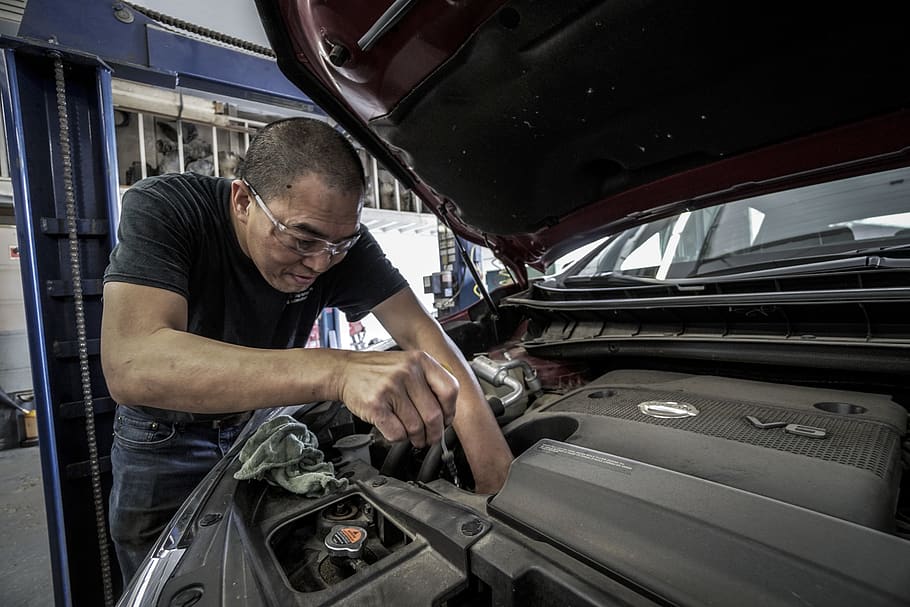
The oil change process will be an inevitable part of your car maintenance and repair. Usually, this is done annually or for every 10,000 miles. Moreover, this will also involve the change of the filter. If your car is still covered by the warranty, it will be as simple as taking it to the service center and letting a professional mechanic perform it. However, if the warranty has already expired, you will have to do this by yourself to cut down the cost of hiring a mechanic. It is pretty simple as long as you know the fundamental steps.
Start by preparing the tools you need, like a bucket or an oil pan, an oil filter wrench, and a screwdriver. You should check your manual; it usually includes the amount and type of oil you need. Your local car shop will also help you find the best filter. It will be best to replace the cabin air and motor filters when performing an oil change. These parts are designed to be replaced periodically. Therefore, it will not be complex to access them, and it will mostly be secured by a couple of clamps and screws. Be sure that you are aware of the proper disposal of oil since this material is toxic.
Tires
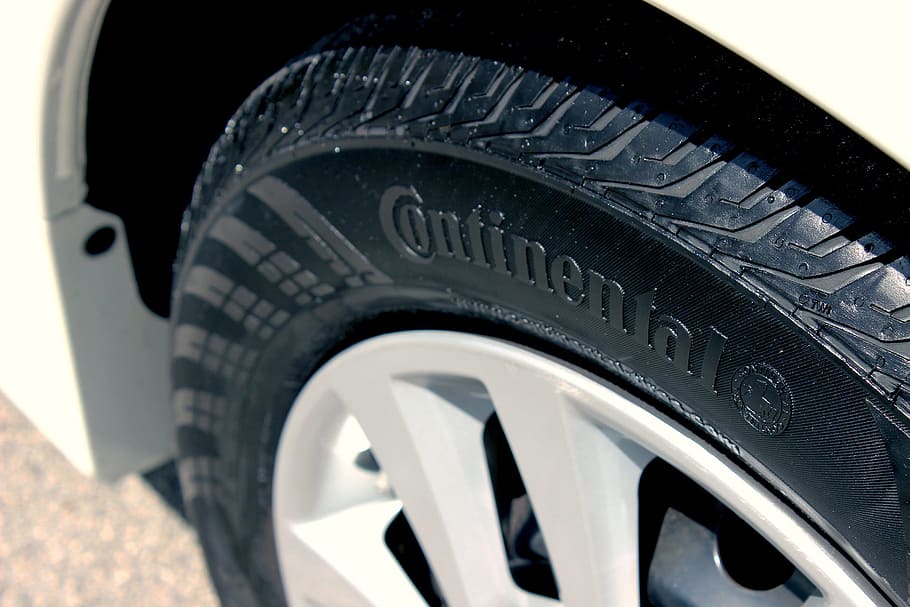
The condition of your time could be directly associated with the age of your vehicle, the make and model of your car, how you drive it, and where you often drive it. For those who live in a colder climate, it will not be unusual to have different sets of tires. They should have winter tires with improved traction and perform better in winter climates. Using summer tires this season will only make it unusable and brittle. There’s also an all-weather type of tires that are superior alternative but economical.
Nonetheless, they will be inferior to the specialized tire, especially in its performance. Whatever your choice is, it is extremely important to keep your car in the best condition by performing basic car maintenance. By paying attention to some signs, you can easily determine problems in your tires, such as poor treads, cracking, and wear. The depth of the tread is critical in breaking snow and rain. If the tread has lesser than 0.2″, it is the best time to replace them.
Light Bulbs
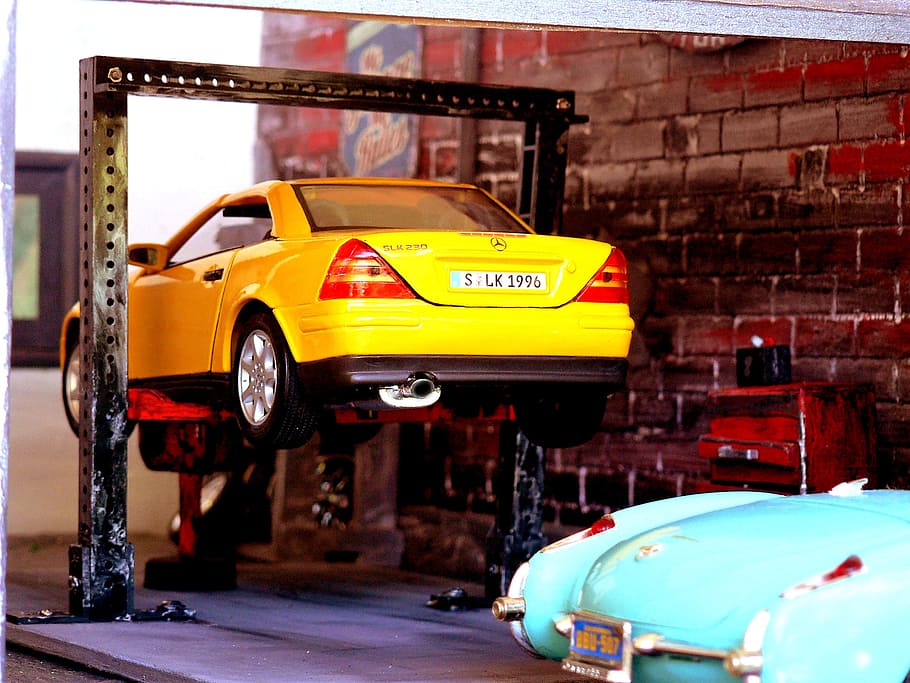
The modern car is equipped with LED lights, but you will have to replace your light bulbs regularly if you have a later model. It can be quite tricky to do for some models of cars since the layout for the light bulb is quite tight and difficult to access. There’s also a tiny room for you to move, making it challenging to replace it.
Maintain a Record
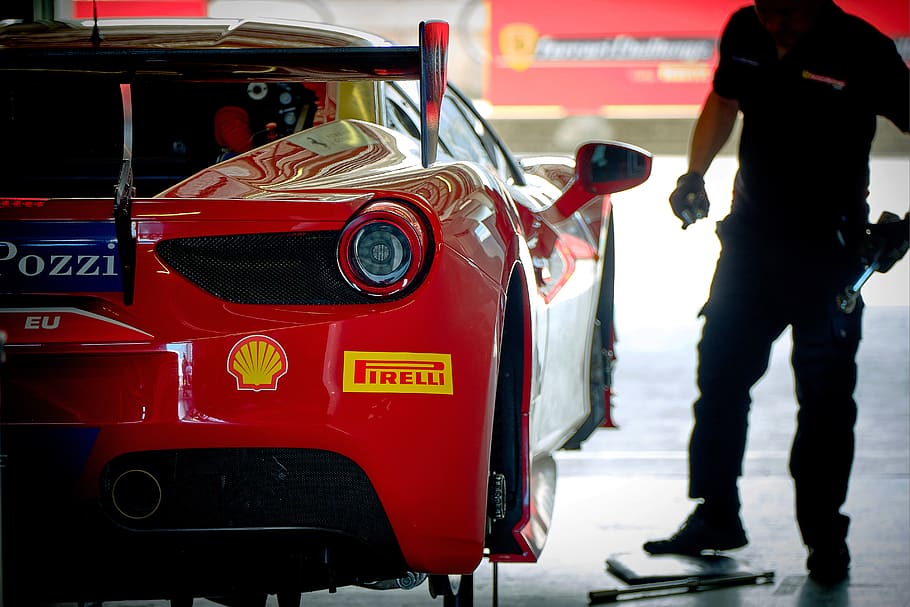
One of the best car maintenance tips is to keep a record of all your maintenance. This will help you keep track of all the necessary maintenance and will help you boost your car’s resale value. Keeping a record would be a good practice. You will be aware of the last time that you’ve performed an oil change or checked the pressure of your car. You can rule out some issues and accurately determine the possible source of your car problem.
A Comprehensive Guide on Car Maintenance and Repair
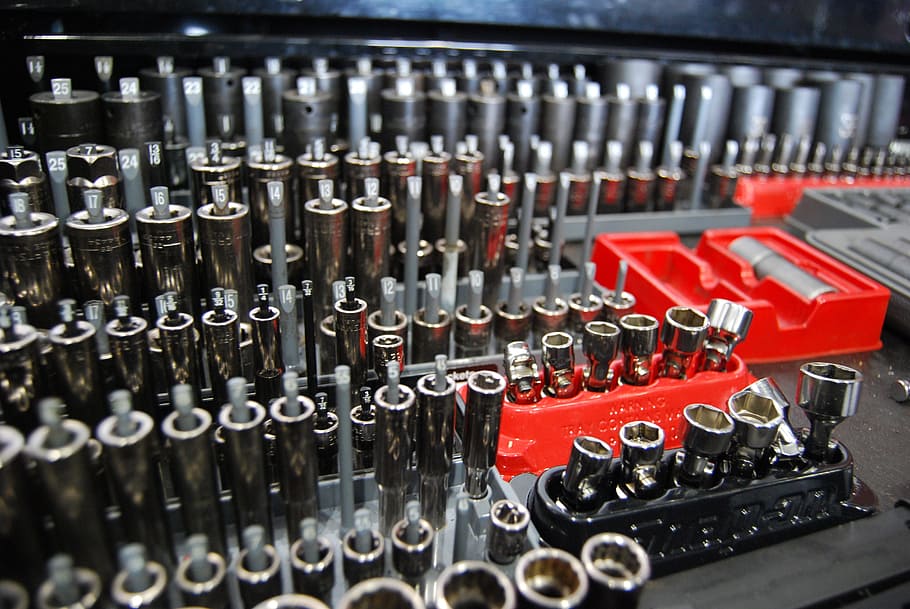
Regardless of your reason for buying a car, the pride and the satisfaction of driving your first car are something that you will remember. You’ve invested a great deal of money and thought in purchasing your first car. For the first-time car owner, basic car maintenance is an unexplored territory. You don’t want to create even the tiniest mistakes, especially on car maintenance and repairs.
Remain Vigilant

Most of the time, if your instinct is telling you that something is wrong with your vehicle, then you need to have it checked. You need to watch out for any strange noise or smell. Observe your fuel indicator since it may tell you if there’s a fuel leakage. You should also check the different warning lights on the dashboard, such as the engine light. You should be observant of any change that will show in your car’s performance, like mileage, steering control, pick-up, and reduced braking. Repairing any issues while still in the early stage will prevent you from incurring higher repair expenses later on.
Keep Your User Manual
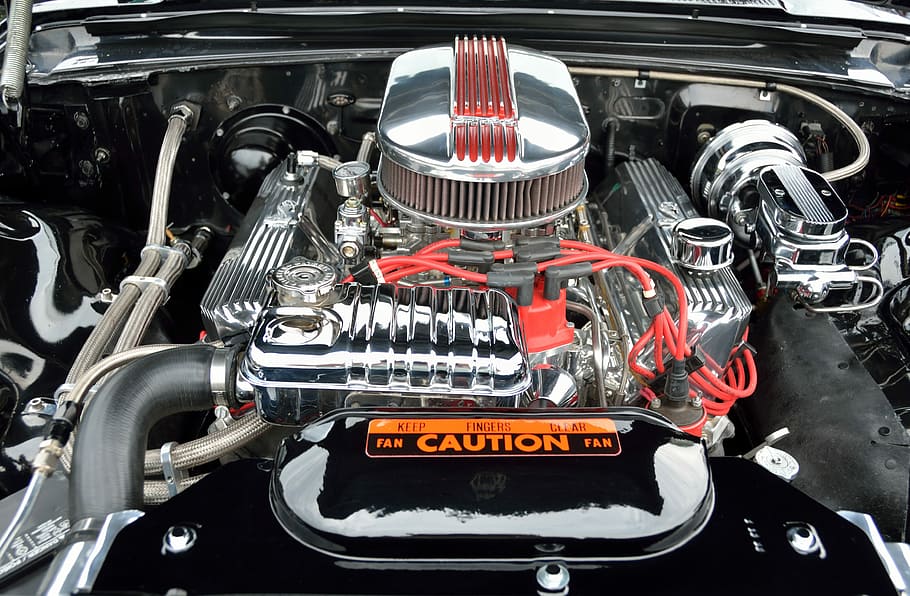
Your car user manual is like a bible of your car maintenance checklist. It will provide you with information on anything you need to know regarding your car. It comes with all the technical details and guides you on the best practices regarding the maintenance and use of the vehicle. Most minor issues that you will encounter can be repaired using your car manual. Your car typically comes with a user manual. If you’ve lost it, you can download a copy at the website of the car manufacturer.
Check the Pressure of Your Tire

The proper pressure in your tire will ensure that you will have a smooth ride, and your tire will be in its optimal condition. As long as your car is properly inflated, you can greatly reduce your tires’ wear and tear rate. Tire pressure will reduce over time, so you need to monitor it constantly. Some car owners choose to keep a pressure gauge with them. Alternatively, you can have it checked at the service center. Be sure that you will do this at least once per month. If you are frequently taking your car to travel, check the pressure at least once a week.
Keeping It Clean

Your car’s cosmetic is also included in our list of car maintenance tips. Washing and waxing your car regularly will remove the grime and dirt caused by frequent road travel. It ensures that the quality of your paint life will remain and you will keep away from any corrosion. With waxing, you can also appraise the condition of your vehicle.
Service Time

You need to remain faithful to the service time of your car. Pay attention to the recommended frequency and schedule of your basic car maintenance. The schedule of your vehicle is determined after computing the different aspects of your car. During your scheduled servicing, the mechanic will perform various operations that they will deem necessary for your vehicle. For instance, it may include replacing the timing belt, tire rotation and replacement, air filter and oil filter replacement, and topping up fluids.
Taking Care of Your Battery

Your car battery is one of the important components of your vehicle and should be included in your car maintenance checklist. A battery in its perfect condition is essential to ensure that your car will run without any issue. Periodic cleaning of your battery ensures that you will enjoy the benefits of the battery for a long time. Your user manual will provide you with some fundamental information about your car battery. If you plan to clean it, disconnect it by plugging out all of its negative terminals. You will then have to clean both positive and negative terminals using your cleaning brush. Afterward, reconnect it by starting with the positive terminals first.
Usually, you will have to take your car for its scheduled car maintenance and repairs every 10,000km. Typically, the vehicle can run from 5,000 to 6,000 km without going through servicing. However, the performance and the condition of your engine will gradually deteriorate. Always refer to your car manual whenever you plan to take your vehicle for a scheduled car service.

Your point of view caught my eye and was very interesting. Thanks. I have a question for you.
I don’t think the title of your article matches the content lol. Just kidding, mainly because I had some doubts after reading the article.
Hey I am so happy I found your site, I really found you by mistake,
while I was browsing on Google for something else, Anyhow I am here now
and would just like to say kudos for a incredible post and a all round thrilling
blog (I also love the theme/design), I don’t have time to read it all at the minute but I have bookmarked it and also added in your RSS feeds, so when I
have time I will be back to read much more, Please do keep up the fantastic work.
Also visit my blog post … nordvpn coupons inspiresensation (t.co)
Great delivery. Great arguments. Keep up the amazing work.
Take a look at my web page :: nordvpn coupons inspiresensation
Whats up are using WordPress for your blog platform? I’m new to the
blog world but I’m trying to get started and create my
own. Do you need any html coding expertise to make
your own blog? Any help would be greatly appreciated!
Check out my web site: nordvpn coupons inspiresensation
I blog quite often and I really appreciate your information. This article has really peaked
my interest. I will book mark your blog and keep checking for new information about once a
week. I opted in for your RSS feed too.
Also visit my page :: Nordvpn Coupons Inspiresensation (https://T.Co/5Gat0Nh9Cj)
Your article helped me a lot, is there any more related content? Thanks!
350fairfax nordvpn
Hi! Would you mind if I share your blog with my twitter group?
There’s a lot of folks that I think would really enjoy your content.
Please let me know. Thanks
Here is my web blog – nord vpn coupon codes
I don’t think the title of your article matches the content lol. Just kidding, mainly because I had some doubts after reading the article.
Thank you for your sharing. I am worried that I lack creative ideas. It is your article that makes me full of hope. Thank you. But, I have a question, can you help me?
Can you be more specific about the content of your article? After reading it, I still have some doubts. Hope you can help me.
I’ve been exploring for a little for any high quality
articles or weblog posts on this sort of space
. Exploring in Yahoo I at last stumbled upon this website.
Studying this info So i am glad to show that I’ve a
very good uncanny feeling I discovered just what I needed.
I so much indubitably will make certain to do not forget this web
site and give it a glance on a constant basis.
Also visit my website :: eharmony special coupon code 2025
Hey there! Would you mind if I share your blog with
my twitter group? There’s a lot of people that I think would really
enjoy your content. Please let me know. Thank you
my blog: vpn
Your article helped me a lot, is there any more related content? Thanks!
Thanks for sharing. I read many of your blog posts, cool, your blog is very good.
Can you be more specific about the content of your article? After reading it, I still have some doubts. Hope you can help me.
I am sure this post has touched all the internet people, its really really good post
on building up new blog. https://tinyurl.com/2ah5u2sb gamefly free trial
Your article helped me a lot, is there any more related content? Thanks!
After checking out a few of the blog articles on your blog, I truly appreciate your way
of blogging. I bookmarked it to my bookmark website list and
will be checking back soon. Take a look at my web site as well and let me know how you feel.
What is a vpn https://tinyurl.com/23bovxld
Hey there! Do you know if they make any plugins to protect against hackers?
I’m kinda paranoid about losing everything I’ve worked hard on. Any suggestions?
It’s going to be finish of mine day, but before end I am reading this
fantastic paragraph to improve my know-how.
Thank you for your sharing. I am worried that I lack creative ideas. It is your article that makes me full of hope. Thank you. But, I have a question, can you help me?
Thank you for your sharing. I am worried that I lack creative ideas. It is your article that makes me full of hope. Thank you. But, I have a question, can you help me?
Thank you for your sharing. I am worried that I lack creative ideas. It is your article that makes me full of hope. Thank you. But, I have a question, can you help me?
Your point of view caught my eye and was very interesting. Thanks. I have a question for you.
Have you ever considered about adding a little bit more than just your articles?
I mean, what you say is fundamental and all.
Nevertheless think of if you added some great images or video clips to give
your posts more, “pop”! Your content is excellent but with images
and clips, this website could definitely be one of the most beneficial in its niche.
Fantastic blog!
My webpage https://tinyurl.com/2p9t75b8
Can you be more specific about the content of your article? After reading it, I still have some doubts. Hope you can help me.
Can you be more specific about the content of your article? After reading it, I still have some doubts. Hope you can help me.
Your article helped me a lot, is there any more related content? Thanks!
Your point of view caught my eye and was very interesting. Thanks. I have a question for you. https://accounts.binance.info/hu/register?ref=IQY5TET4
SrideviNightGuessing offers accurate night results, charts, and prediction insights, helping users make smart guesses and stay updated easily
every night.
Thank you for your sharing. I am worried that I lack creative ideas. It is your article that makes me full of hope. Thank you. But, I have a question, can you help me? https://accounts.binance.com/register-person?ref=IXBIAFVY
It’s really a great and helpful piece of information. I am satisfied that you shared this helpful info
with us. Please stay us informed like this. Thank you for sharing.
https://www.highlandguides.com/ vpn
Can you be more specific about the content of your article? After reading it, I still have some doubts. Hope you can help me.
टिप: समय से पहले “—” दिखेगा; समय बीतते ही अंक/जोडी अपने-आप
भर जाएगी।